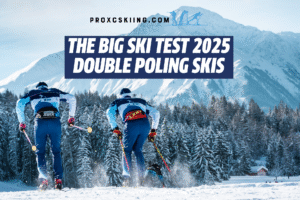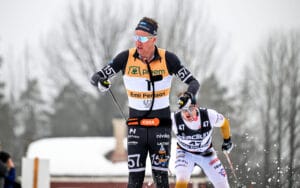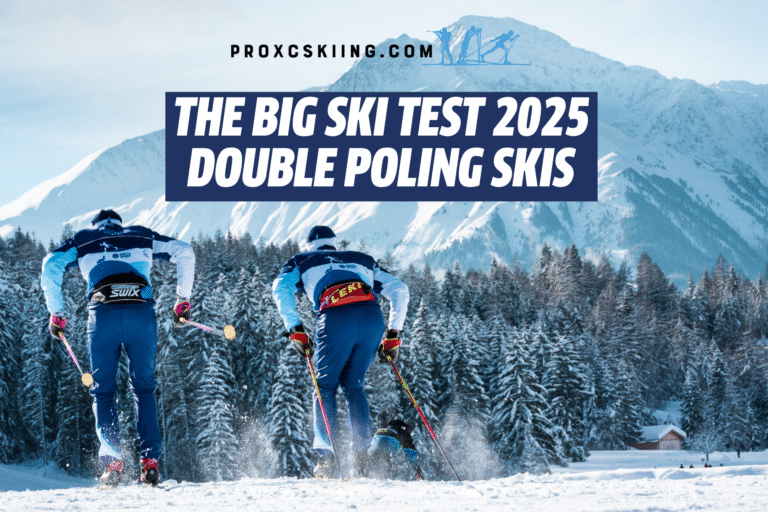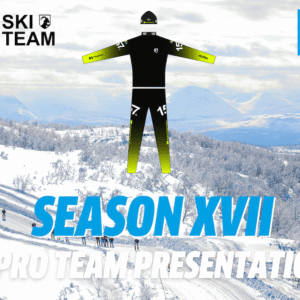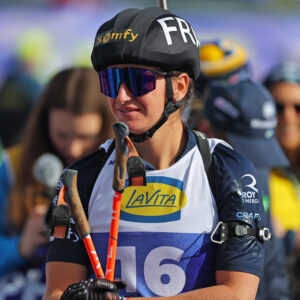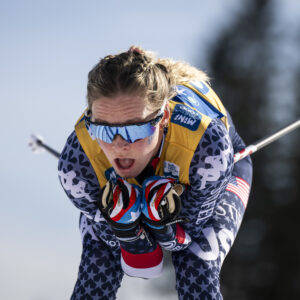How To Choose The Right Skis For Double-Poling?
Some years ago, it was usual to see elite skiers using the traditional diagonal striding technique in long distance races. Most of the effort was made by the legs and, at the beginning, skis were waxed from head to tail guaranteeing a very good grip, and the poles were so short that could not allow a strong push with the arms.
But when long distance skiing began taking steps to towards professionalization, and with the evolution of equipment, elite skiers realized that double-poling was the best technique for moving faster when racing long distance. Upper body power became an important characteristic to our sport. When an athlete has a strong push and a good technique, he or she may decide not to use grip wax and therefore enjoy a better glide.
This evolution raised a new question for both elite and amateur skiers: what type of skis should they use for double-poling in long distance races? Nowadays, elite athletes are using different types of skis in order to show their double-poling power and endurance, and making the right choice is not easy. In order to facilitate the choice, we will provide you with some information that can help you.
Skate Cross-Country Skis
Some athletes have had success in double poling on skate skis. Even at some World Cup events, where tracks are usually hillier and with steep curves, skate skis have proven to be a good choice. This was the case with Kazakh Alexey Poltoranin, when in 2015 he won the Toblach event using only double-poling technique. If you have a good technique going downhill and the race course is hilly and with steep curves, skate skis might be a good choice to take advantage of the descending parts. Skate skis are shorter and lighter, which may help you in getting more speed. Also, they are more rigid, making them very responsive when pushing off their edges.
Classic Cross-Country Skis
Classic cross-country skis are the traditional choice for the Visma Ski Classics events. Those skis are longer than skate skis and usually work best for long distance races. Because the uphill and downhill sections are more gradual, and control and edging are not done at such high speeds, classic cross-country skis make it possible to go at a higher speed during most of the course. And, if you are not 100% confident about your upper body strength, you can always put some grip wax on them.
Dedicated Double-Poling Skis
Most ski manufacturers are now selling dedicated double-poling skis. According to them, these skis have a different camber and different pressure points against the snow. They are a combination of the best parts of the skate skis and the classic skis, allowing for a more efficient use of the arms, and more specifically, more durability while double-poling.
Outcome:
It is not an easy choice between skate, classic or double-poling skis. I would say it depends on the characteristics of each skier, and also on the profile of the race course. If you have a good technique going downhill and are able to make fast turns, using skate skis might be a good idea. On the other hand, if the course is flatter, it might be good to use classic skis, taking advantage of higher average speed. If you can consider yourself a strong double-poler, it might be a good choice to try to get the best of the both worlds. However, keep in mind that it is not easy to find the best parts of both types in one type of skis. Some characteristics will always be sacrificed.


